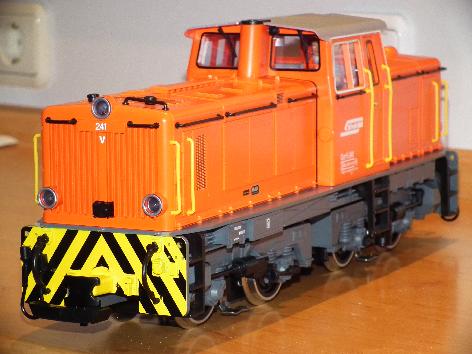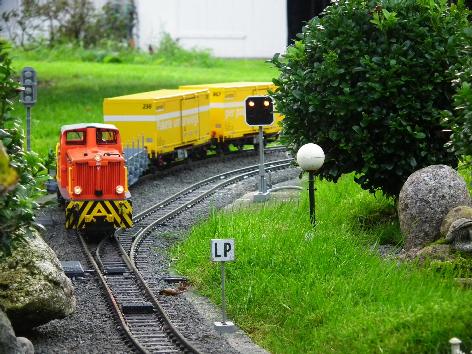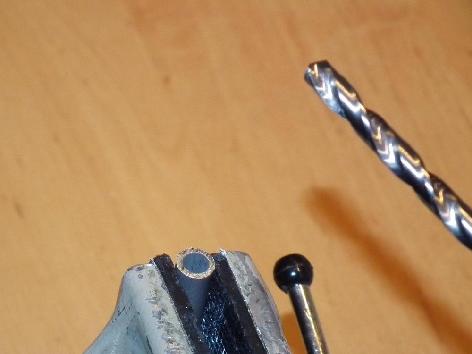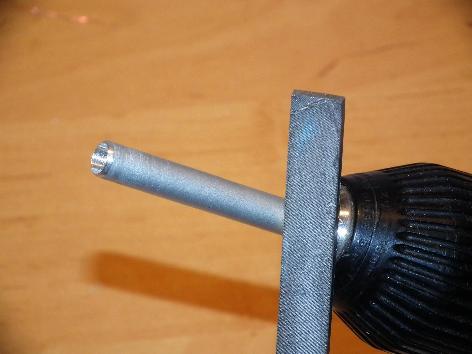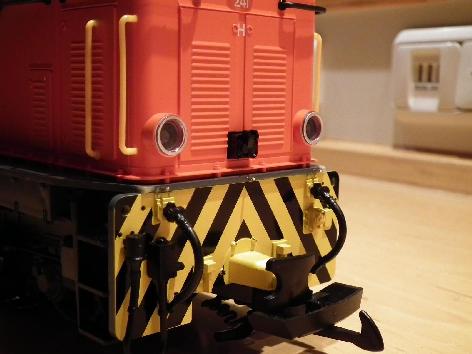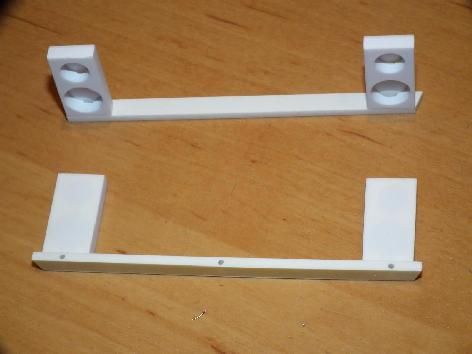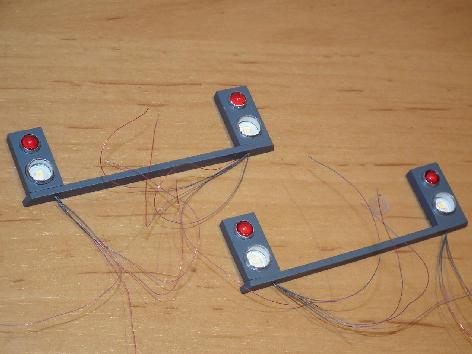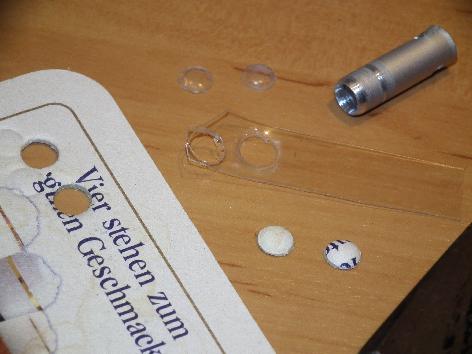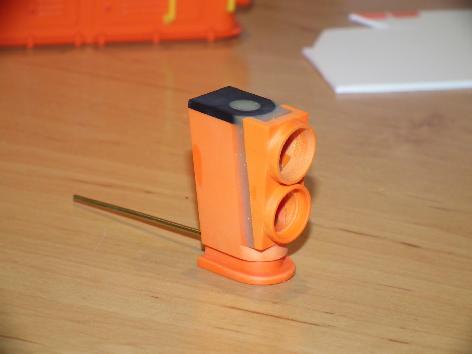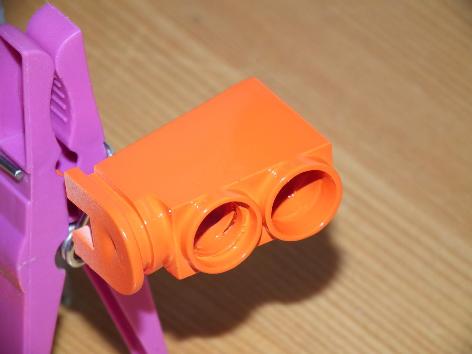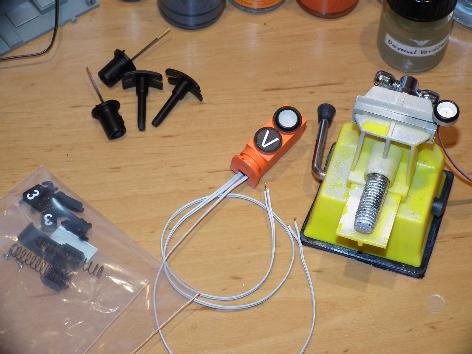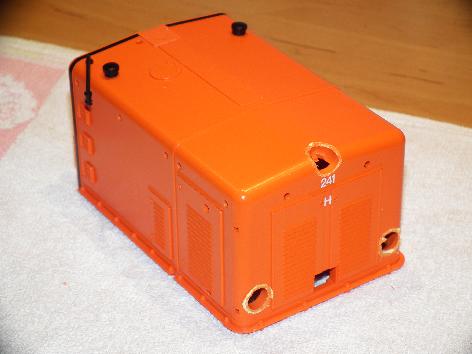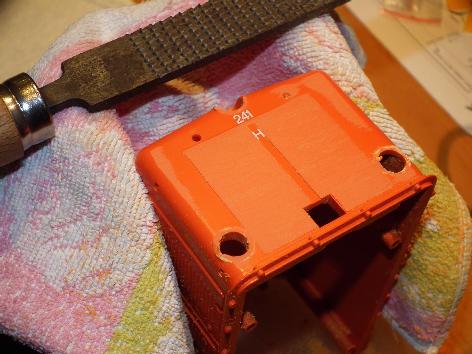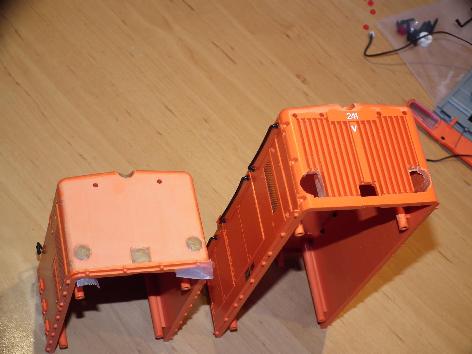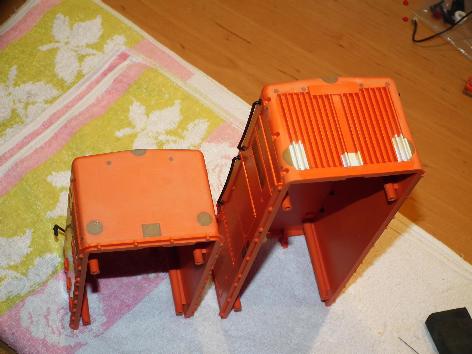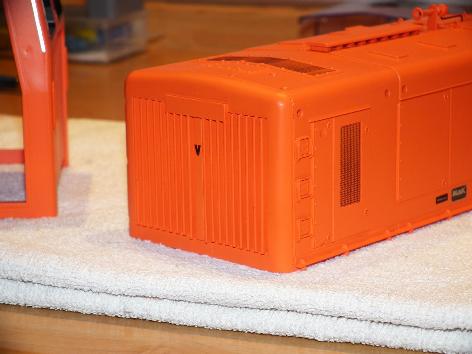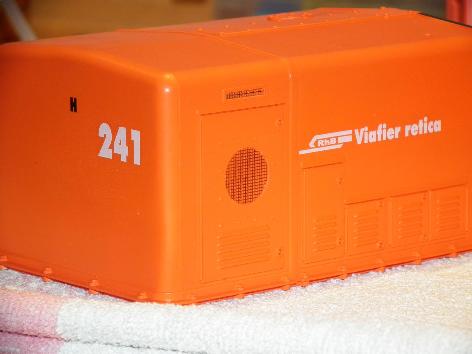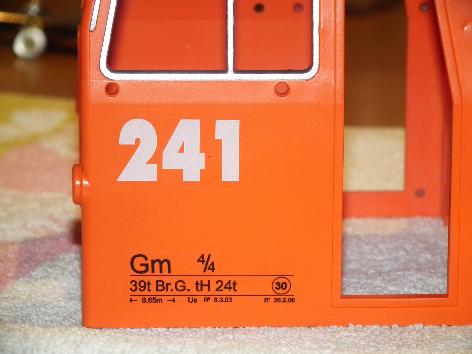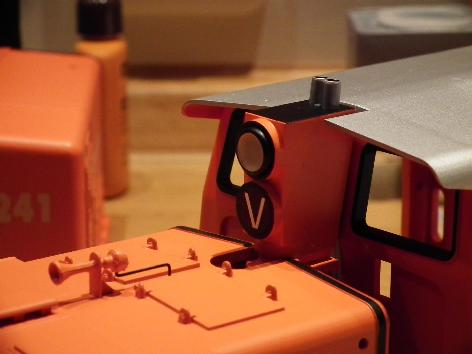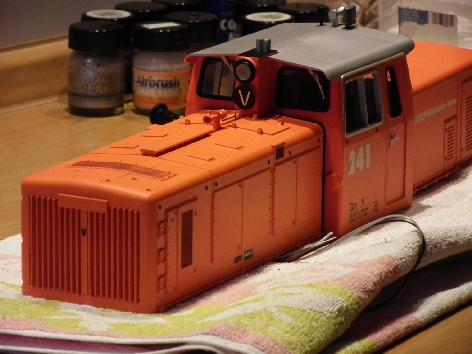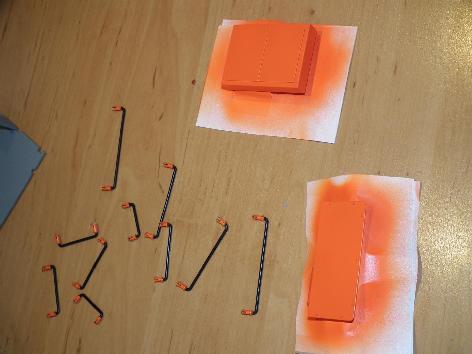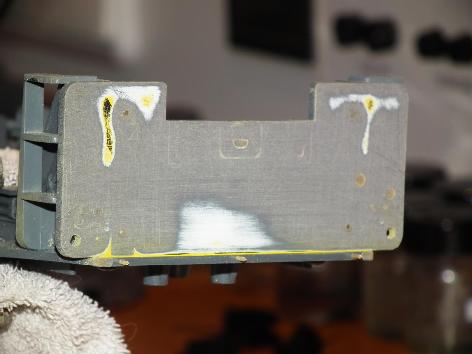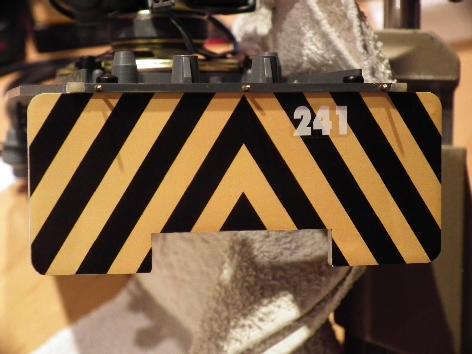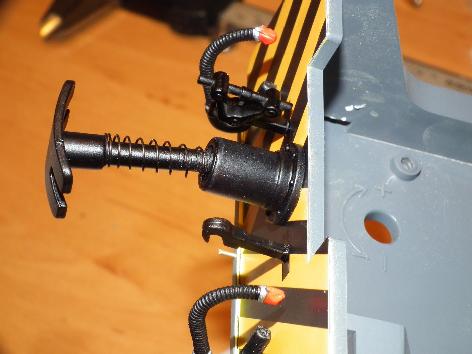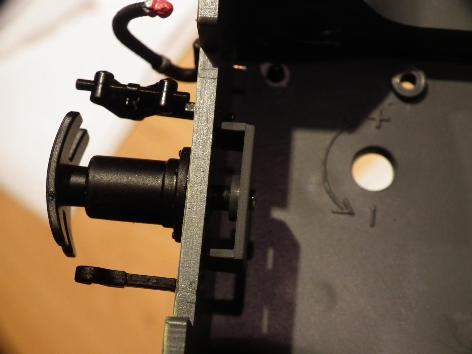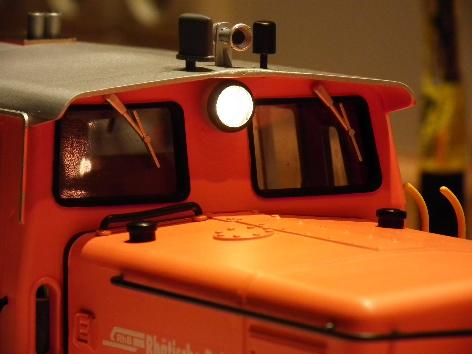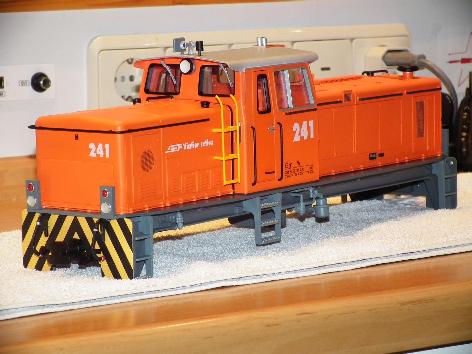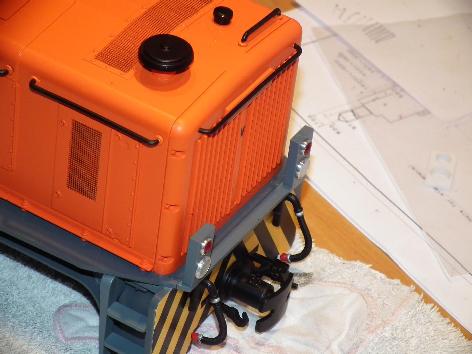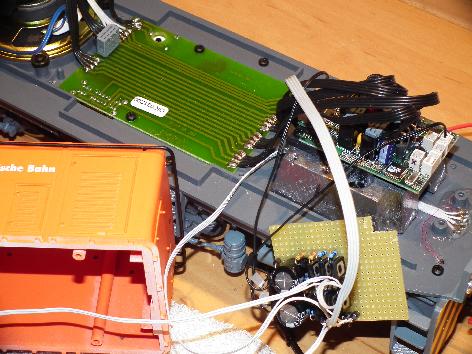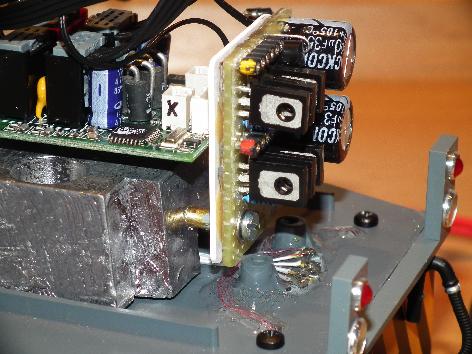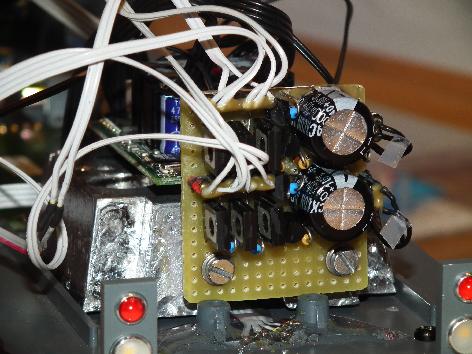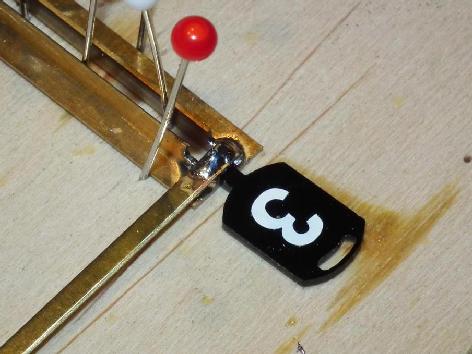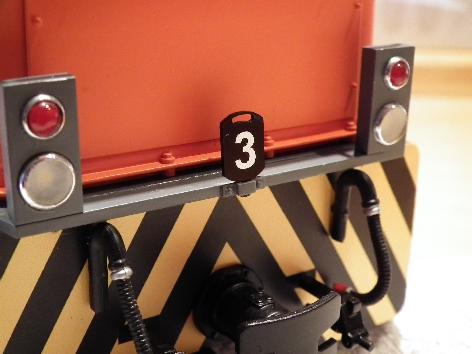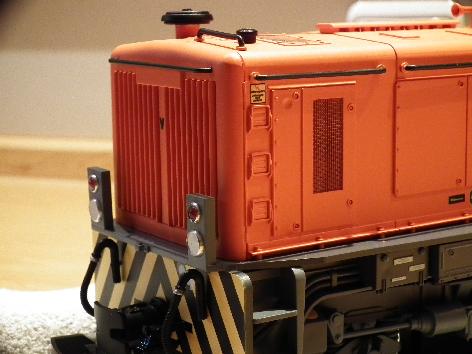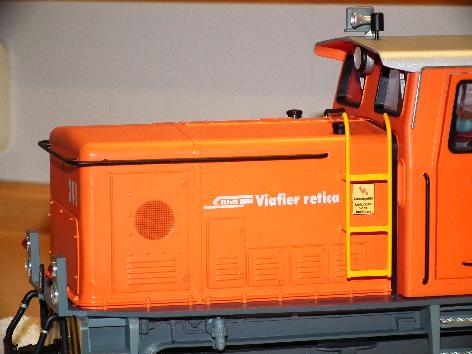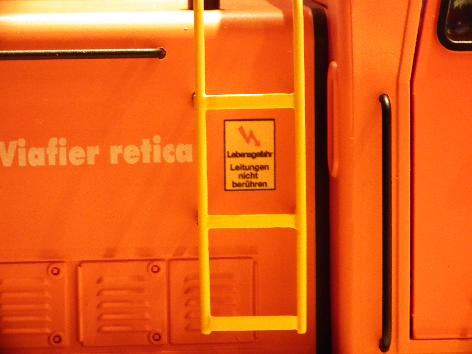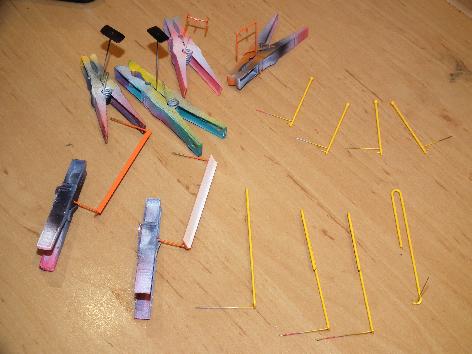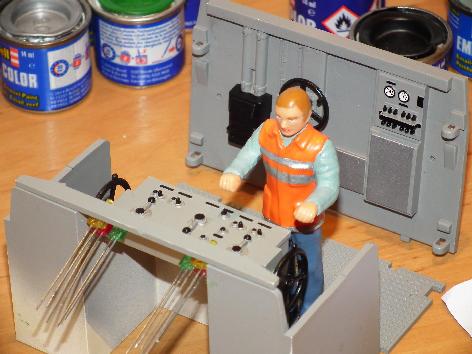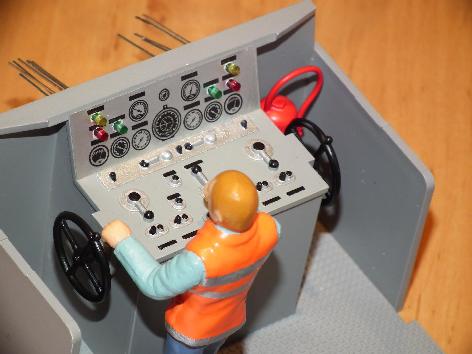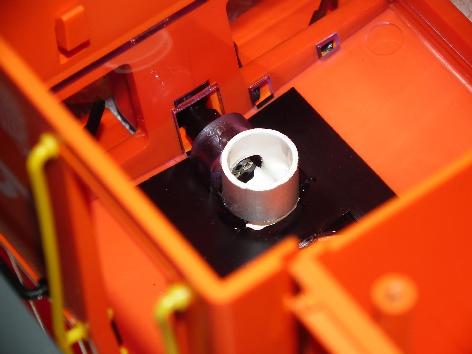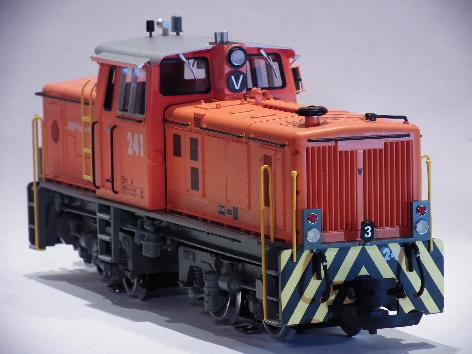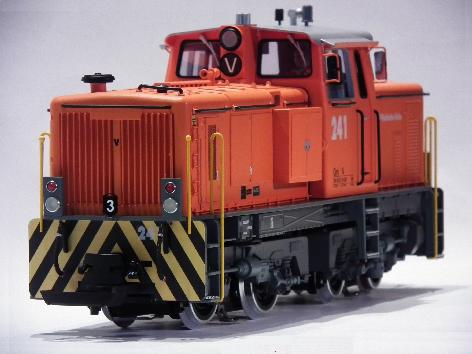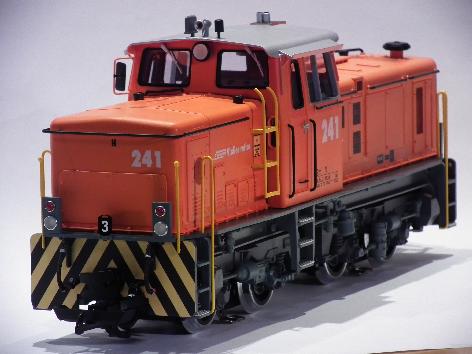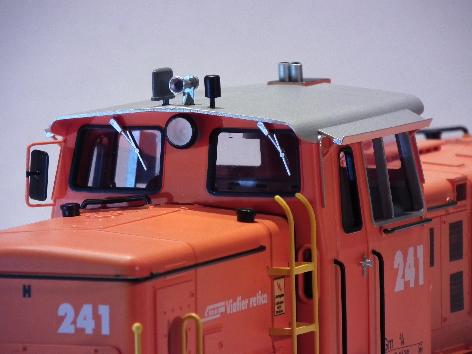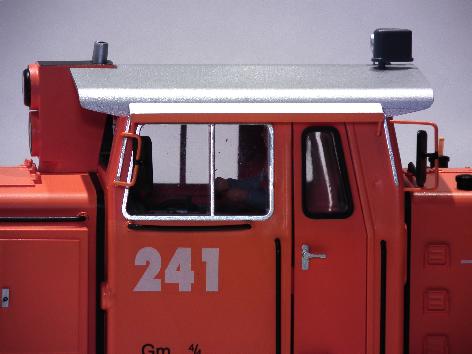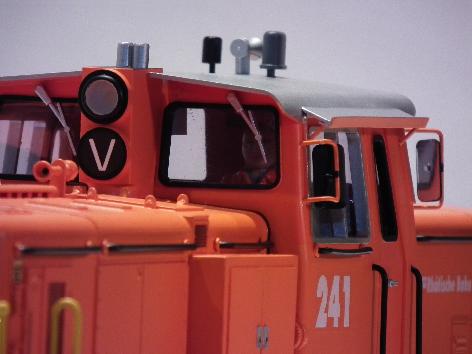Katzhagen modeling department
LGB 26512 / RhB Gm 4/4 241
Or: Turning a Gmeinder V51 into a Mak 400 BB
The LGB 26512's product description declares this loco to be a model of a RhB unit, which present's itself as nothing but an orange version of a V51 dating back to 1964. In point of fact, the RhB 241 is a MaK 400 BB built in 1958 which is different in quite a few significant details to the licensed V51 clone from Baden-Wuerttemberg.
A concise history of this engine and related pictures can be found at Loks-aus-Kiel.de and additional informaton at Wikipedia.
Knowing the differences between the prototype and LGB's "model", I was more or less bound to the decision to turn the orange V51 into a model of the prototype. The inevitable nuisances with such redesigns took their course and more than once I had to ask myself "WTF am I doing here ?"
The most significant difference in the V51's and 400 BB's overall appearance is their headlights' configuration. Since no acceptable lights for the conversion could be found at the relevant manufacturers, they had to be build manually...
An 8x5mm aluminum pipe was used as a basis for the lower headlights. Its inner diameter was drilled out to 6.5mm and it's outer shape was filed to form using a cordless screwdriver.
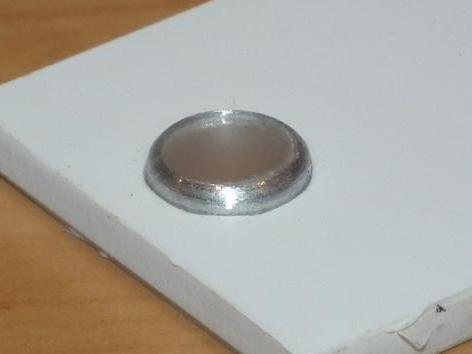
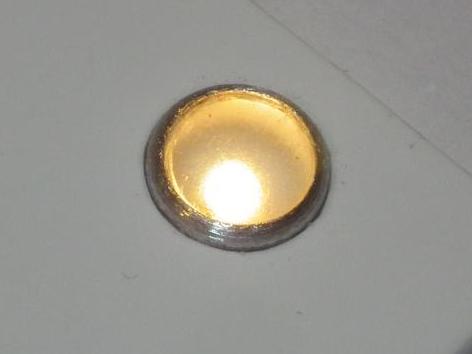
A piece of 2mm thick ABS resin was used for a first test with the ring made from the pipe together with a piece of clear plastic taken from a Preiser figure and a SMD LED - which looks like a perfect solution.
The lights' housings and the chassis' elongation by 3.5mm on each face side were made from 2mm thick ABS resin.
The chassis ends' corners were modified by adding some 2C resin to match the elongations' shape. Dowels made from 1mm brass rods are used for mounting the elongations on which the light housings are fastened.
Warmwhite SMD LEDs are used to illuminate the head and tail lights which get connected by 0.15mm enamel wire. Cut-off heads of red 5mm LEDs look very prototypical with the tail lights. Lenses for the lower headlights could be made from clear plastic taken from Preiser boxes. Not punching out the material results in flat lenses after cutting them out manually along the circular notch. The lenses' rear sides get frosted a bit by grinding them wet with a grit of 600.
The structure comprising the upper front and shunting light is made from the V51's exhaust panelling and the corresponding unit taken from LGB's Ge 2/4 213.
Warmwhite LEDs are used here as well. The picture on the left also shows the horn which is meant to be mounted upon the front body and the new exhaust pipes. The new upper headlights and further details to be mounted are shown on the right.
And now for bringing on the heavy artillery...
Since the 400 BB's headlights aren't embedded into its bodyshell like with the V51, the face sides were modified accordingly.
After the wrong lights' coarse removal the tail body's face is filed off.
The resulting holes are filled with 2C resin and ground smooth. The front face's ventilating grating is complemented with ABS resin stripes cut to size. Furthermore the railings' mounting holes which are needed no longer are sealed with 2C resin.
After the body shell had been newly painted orange, a more suitable lettering was applied. After having painted the window frames black and silver all of the body shell parts got a final silk-mat clear coat.
Next up was mounting small parts like the horn and the speaker (made from the 4/4 III's twin horn and a bit of brass) as well as the antennas and the upper headlights. The rear upper headlight requires a modification of the cab's interior glas structure so that it can be wired.
The picture on the lower right shows that the roof's rear gap had been filled (with 2C resin) and that both the antennas and the speaker are mounted in this place.
The cab's mounting holes for its doors' railings were sealed with 2C resin too and some new details were added to its rear side. The rear upper headlight was made from a shortened bezel 5005 and its lense, available at Christian Fesl.
Similar procedure with the front upper upper headlight, which comprises a bezel 5006 and its lense by Chrsitian Fesl.
New railings for the body shell were made from 1.5mm brass rods since the V51's
related configurations don't match those of the 400 BB. The (more or less)
nevertheless usable railings' mountings were painted orange for a better look.
A cover plate with suitable hexagon screws was made for the tail's face and the front body shell got a big tool box which was equipped with fake lock plates before it got its final clear coat.
Even though the railings are still missing in the picture on the left, the result already gives a significantly different impression, closer to the RhB prototype.
... the fronts' areas beneath the chassis:
A cover plate with suitable hexagon screws was made for the tail's face and the front body shell got a big tool box which was equipped with fake lock plates before it got its final clear coat.
Even though the railings are still missing in the picture on the left, the result already gives a significantly different impression, closer to the RhB prototype.
On to the next radical cure...
... the fronts' areas beneath the chassis:
Since there are next to no similarities between the V51's and the 400 BB's areas around there buffers, all of the details were removed and replaced with details matching those of the prototype. This procedure was started with the black-yellow hazard marking (which was printed on self-adhesive film using a laser printer) and the lettering.
Further details like buffers, hooks and their counterparts as well as hoses which were painted according to the prototype before mounting.
On the electr(on)ical equipment...
Prior to getting started on the definite wiring, each light had to undergo a final functional test - simply to avoid silly surprises.
A last visual examination prior to the lights' definite wiring didn't reveal any apparent flaws - everything OK.
Before mounting the headlights' new power supply, its direction dependant functions were tested with both the new lights and the already existent electronics onboard - successfully.
The cables finally got connected after having mounted the new board on the rear piece of ballast metal (the crow's nest looks worse than it is) and the housing could be screwed shut again.
Further details
A further typical detail of the RhB switchers are their identification marks labeled 1 to 5 which gets changed according to their particular service. The plate is available as an accessory for which a holder was made from brass.
Also the warning signs referring to danger from the catanary must not be missing at the steps.
Approaching the home stretch - now it's just mounting the railings for the steps, the mirrors on the left side and the roof extensions as well as a few further letterings.
Actually, there is something else - the cabs interior.
The German fireman was re-educated to be a RhB engine driver and his workplace's paint was adapted to the prototype.
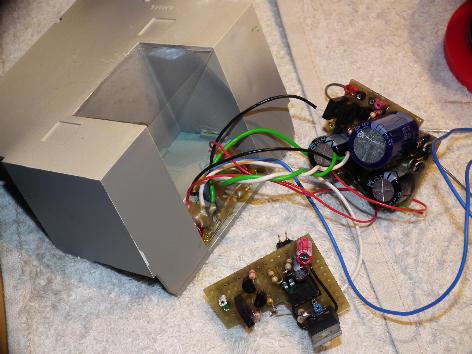
The dashboard was equipped with six LEDs which come up blinking or permanently according to operating conditions and direction.
The required electronics, i.e. a voltage independant current control for LEDs which starts working at about 4V, could be mounted in the small hollow below the dashbaord. This required the circuitry to be split into two piggyback boards to fit in there - see picture on the right.
The cab's light was equipped with a shade which limits the illumination to the dashboard area. Feeding power to the dashboard's control lights is achieved by an additionally mounted plug on the board beneath the cabin which also is connected to the tracks.
The result...
The model's affinity to its RhB prototype now can't be denied any longer and the appearance now is quite different to the V51's.
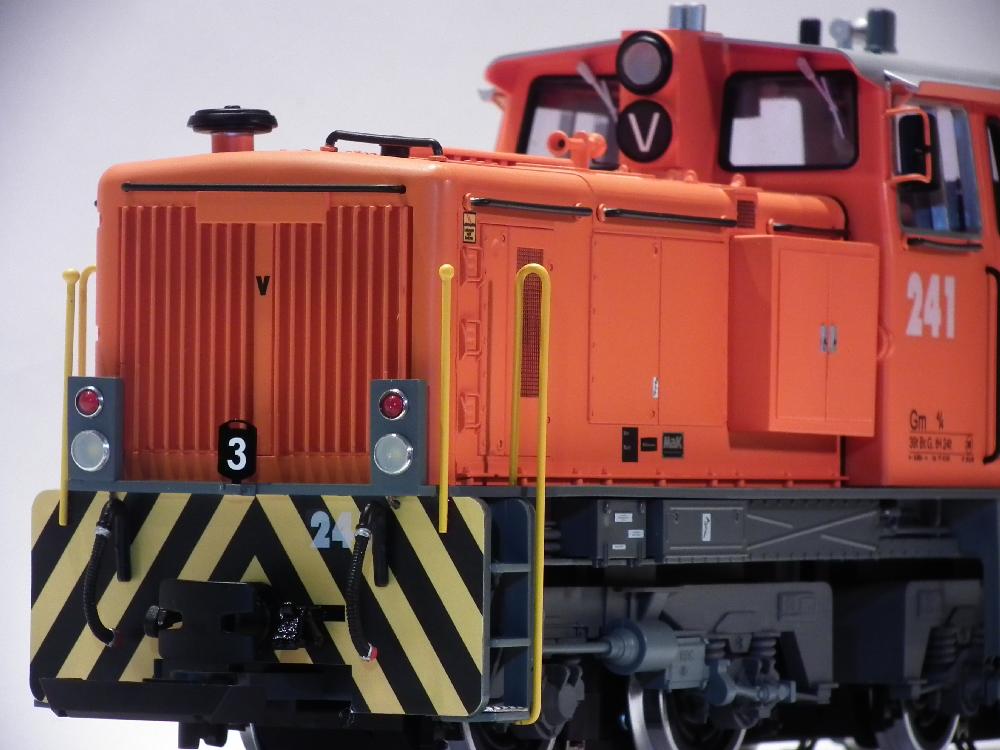
| Items | Manufacturer/Provider |
|---|---|
| Lettering | Troeger |
| Upper headlight bezels | Christian Fesl |
| Switcher number | Christian Fesl |
| Antennas | Christian Fesl |
| Brass wrought material | Fiedler |
| Plastic boards | Modulor |
| Downloads | |
|---|---|
| For white adhesive film | Further lettering and details |

